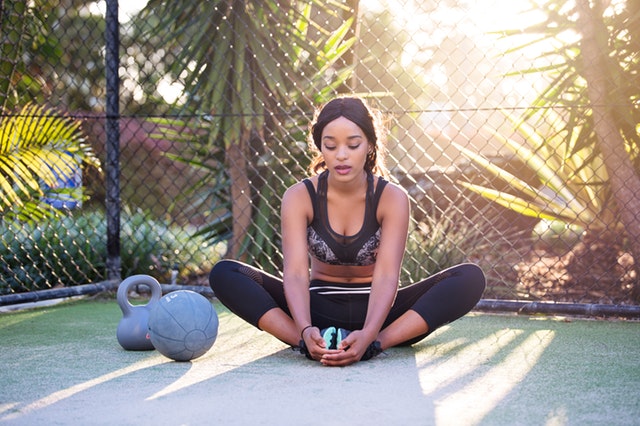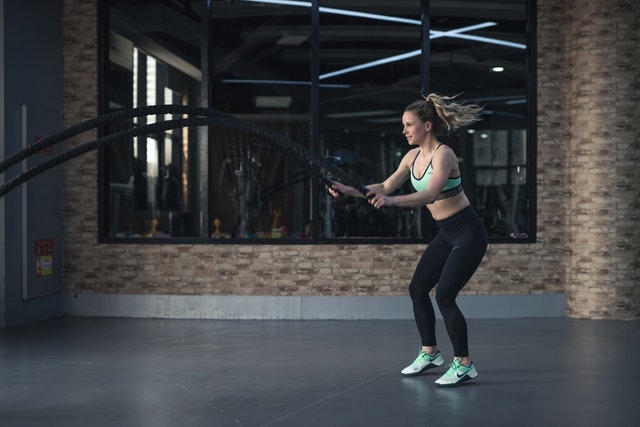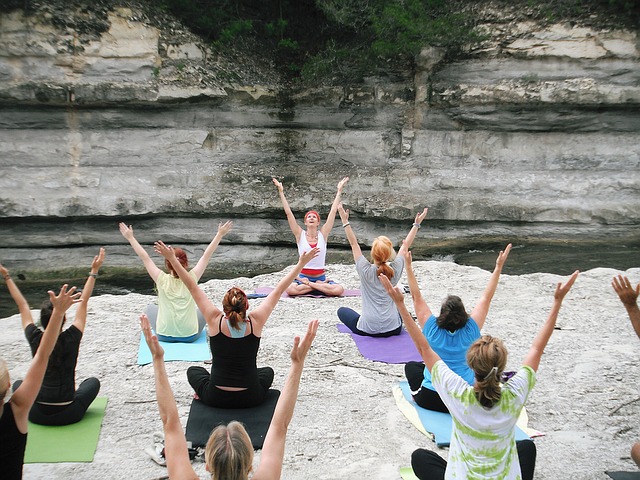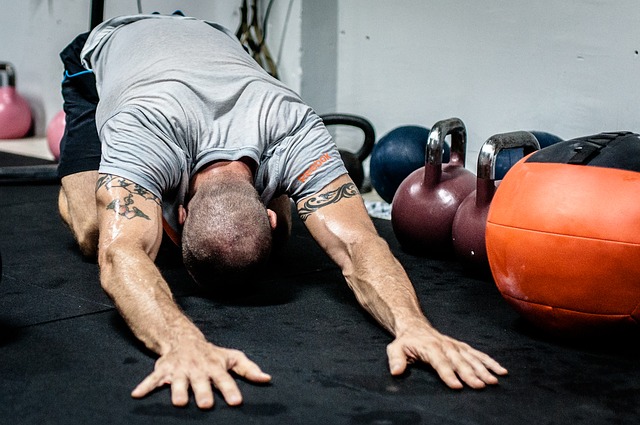
Image Source: Pexels
Exercise plays a significant role in keeping and protecting bone health at every age. Whether you’re young or old, physical activity slows the rate of bone loss and increases muscle strength, balance, and coordination, thus leading to better overall health.
Bones are living organs which accumulate calcium deposits at your early to mid-20s. Bone mass will; however, start to dwindle once you reach your 40s.
The reason is that your body will start sourcing calcium from the bones if it fails to get a steady calcium supply from your diet. This leads to accelerated bone loss, which might even continue as you age, causing osteopenia or the more severe osteoporosis.
The former describes a low bone mass while the latter implies a considerable loss of bone density. The two conditions affect over 43.4 million people in the United States and can make bones brittle and easy to break.
Other factors that can cause the bones to become weak include physical inactivity and immobility resulting from a limb in a cast. Dr. Lucas MD – an expert in joint, tendon, muscle, or bone-related issues – says exercising is the absolute best way to treat osteoporosis and build muscle strength.
Building Blocks of Strong Bones
As we said earlier, bones comprise active, living tissues that adjust with the stress and strains of physical activity. Exercises like gymnastics, running, and jumping apply force on the bones and trigger cells in the bones to reinforce themselves.
These cellular mechanisms contribute to fortified bone structure, density, and strength. Getting enough physical activities can help bones sustain strength, which might otherwise get lost due to age- and hormone-related adjustments.
Certain exercises that force you to work against gravity are vital physical activities for building strong bones. Below are 4 essential exercises to make your bones strong.
1. Strength Training

Image Source: Pexels
Strength training is an excellent exercise regimen that works out or trains non-weight-bearing bones of your hands and arms. Some forms of resistance or strength training exercises include performing aerobics or lifting the weight machines at a health club.
The exercise involves working against the resistance of some kind, which could be the weight machines, your own body weight, or a set of free weights. It does prove useful in terms of stressing a series of bones and muscles.
It’s extremely easy to realize the benefits of strength training, and you don’t have to match Mr. Olympia to achieve the results. Weight training with low-to-medium weights and a lot of reiterations can provide up to 22% increase in bone density in postmenopausal women, and up to 29% increase in bone density in osteopenic patients.
Experts recommend indulging in strength training a minimum of twice a week to stimulate optimum bone growth. You might also want to engage a gym instructor or trainer to help design a workout plan for your arms, shoulders, back, and legs. It’s imperative to get the right strength training that suits your fitness level in the quest to strengthen your bone health.
2. Yoga

Image Source: Pixabay
A study published in the Yoga Journal indicated that women who perform a yoga pose regularly have higher chances of enhancing bone mineral density in their spine than those who never do yoga. Yoga moves like precise Iyengar style and athletic or vigorous ashtanga can play a remarkable role in building bone health in wrists, spine, and hips – all of which are most susceptible to fracture.
Yoga is all about supporting yourself using your legs and arms. The two key benefits of yoga are improved balance and increased flexibility, and both can help avoid bone breaks and falls, more so in older folks.
Hip fractures are more prevalent in elderly women than any other cohorts. They easily lose balance, slide, and fall on their hip leading to hip bone breakage.
Wrist fractures are largely caused when one tries to support themselves after tripping and falling. Fractures can get more painful and deadly with age.
As an Australian study reports, more than 240,000 people aged over 45 years found fractures so lethal that they can double the premature death risk. Standing yoga poses can work the bones of the hips, legs, arms, wrists, and shoulders. These poses can as well sharpen balance, body awareness, concentration, and coordination – elements for preventing falls.
3. Stretching Exercises

Image Source: Pixabay
Stretching is another essential exercise that makes your bones strong. It’s useful to incorporate stretching activities targeted at all your major muscle groups.
Most stretching exercises are geared at lengthening tight muscles in a bid to reduce back pain. These exercises can equally promote good posture and proper spinal mechanics.
Some of the most commonly tight muscles encompass spinal extensors, shoulder elevators, and external rotators, hip flexors, and ankle dorsiflexors. Spinal extensors are muscles used to arch the back, shoulder elevators and external rotators are those used to raise and rotate the shoulders, hip flexors are for lifting the knees, and ankle dorsiflexors are used to pull the feet toward the body.
Experts suggest performing stretching exercises slowly and smoothly, at least once or twice a day, for maximum benefits. Staying limber goes a long way in protecting against falls as well as easing pain associated with arthritis.
4. Walking & Jogging

Image Source: Pixabay
Walking and jogging are two fitness trends that never go out of date. Walking is especially very popular among women of all ages because it’s a great way to overhaul their bone health.
Walking and jogging can fortify your leg bones, which offer support to your body weight. Jogging exerts pressure on your feet against the ground, hence stressing your bones further and strengthening them.
Whereas walking is a more moderate exercise, jogging is a sort of high impact exercise. The bouncing effect you get from jogging helps load the bones and make them stronger.
It’s important to exercise caution while on the treadmill, especially if you aren’t ready to give up your jogging escapades yet. Never overdo it to prevent injury problems, and cool down properly after hitting the run. Jogging can be dangerous for older persons as well as those with poor balance, so be careful while at it.
As for walking, it’s absolutely free and you can do it wherever you are, even when traveling. A certain study conducted in a hospital facility showed that nurses who walk for four hours a week had about 41% lower risk of hip fissures compared to their counterparts who walk for less than an hour a week.
Final Thought:
The safest exercises for your bones are those that align your spine in a straight or vaguely arched posture. The above exercises will help strengthen your bones and keep your spinal position at optimal. For assistance in establishing a proper exercise program that you can enjoy, you can get in touch with Dr. Lucas MD for the best responses to your inquiries.
About The Author:
 Dr. Lucas J. Bader MD, MBA is a board certified Orthopaedic surgeon specializing in the surgical and non-surgical treatment of osteoarthritis. For the past 20 years, Dr. Bader has spent countless hours combing through massive amounts of information, studying under musculoskeletal masters, and exchanging ideas with other experts to bring you the best strategies to help you accelerate your recovery from injury, prevent chronic disease, and invigorate your musculoskeletal health and fitness.
Dr. Lucas J. Bader MD, MBA is a board certified Orthopaedic surgeon specializing in the surgical and non-surgical treatment of osteoarthritis. For the past 20 years, Dr. Bader has spent countless hours combing through massive amounts of information, studying under musculoskeletal masters, and exchanging ideas with other experts to bring you the best strategies to help you accelerate your recovery from injury, prevent chronic disease, and invigorate your musculoskeletal health and fitness.




